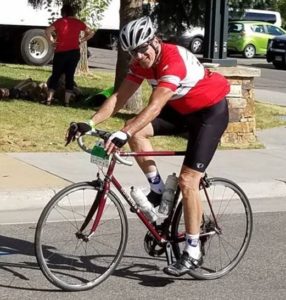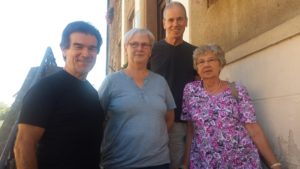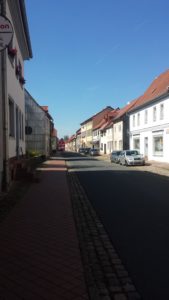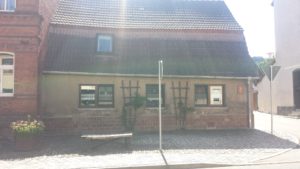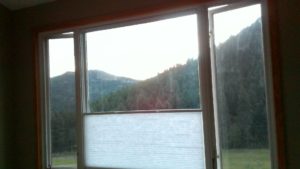Tom Edsall’s recent column, as always, is well researched and thoughtful but reinforces the idea that the Democrats must choose between “liberal” or “moderate” candidates. I disagree. The copy editor also chose a poor headline: “Should Democrats Embrace the Center or Abandon It?”
The problem is first, the definition: What is a liberal Democrat and what is a moderate one? Put another way, what is a centrist?
One Democrat supports abortion but with late-term restrictions, background gun checks but not an assault weapons ban. She also supports the Dreamers and a $15 minimum wage. Another supports unfettered abortion, a ban on all but long guns for hunting, a stricter immigration policy but no minimum wage increase. Which is the centrist? Can you vote for both or neither?
Edsall falls into the trap many do: He wants a clear battle of black vs. white, or in this case liberal vs. moderate. But Democrats need to escape this straight jacket. I happen to support a ban on high magazine semi-automatic guns. I support a woman’s right to choose. I support the Dreamers. I support transgender rights. But I can support a Democrat who is willing to raise taxes, consider dramatic changes in tax laws that engender a more level economic playing field and believes that healthcare costs must be dramatically reduced—even if that candidate doesn’t support a semi-automatic weapon ban, believes there should be some restrictions on late-term abortions, supports tighter immigration enforcement and believes transgenders should use a gender neutral bathroom.
That’s because for me, the most important issue in this country is the economic stagnation of the middle class and income inequality. And I think many Trump voters would agree. Offering solutions to the economic question has a great chance of minimizing the importance of many social issues with enough voters to provide Democrats with a comfortable margin of victory and a solid grasp on both the legislative and executive branches of the federal government and in many cases, state governments, too.
Naysayers will argue that voters vote emotion, not financial interests. The failure you feel when you can’t send your kids to college is an emotion. The fear you won’t have enough for your old age is an emotion. Your despair that you can’t feed your kids is an emotion.
The challenge is encapsulating those messages for the rallies, fleshing out plans on candidate websites, and tying the costs with a direct source of income. Speak boldly, confidently, measuredly. Candidates also have to restore in voters the faith that government can help them. That may be the biggest challenge of all.
Regarding Coner Lamb’s recent win in a conservative Pennsylvania House district election, Edsall states, “Among Lamb’s constituents, cultural liberalism is, consequently, a liability — even fatal, electorally speaking.” Funny, Trump’s immoralism was not a problem for white evangelicals because they thought he would shake up things and represent their economic interests. Remember during the campaign, Trump was not clearly anti-abortion or anti-gay and he was clearly immoral.
Edsall also makes a statement that begs explanation: “Insofar as Democrats place a higher priority on purity than viability, they may be risking an indeterminate extension of the Trump era.” Really? And even if that were true, does that mean electoral defeat? It seems that the GOP has had tremendous electoral success by emphasizing purity over viability, too. It has now caused them governing problems, but not voting problems.
Democrats do need a big tent but not no tent. The congressional primary in Illinois pitted a renegade endorsed by several liberal groups against the incumbent Dan Lipinski. He apparently opposes abortion, marriage equality and Obamacare. The question I have is, what makes him a Democrat? If it is an aggressive economic reform agenda and I was in his district, I might need to calculate how successful he might be in thwarting Democrats on abortion, equality and healthcare vs. how likely a more liberal candidate can win the district. And in the general election, am I willing to allow the election of someone who opposes all that I support?
In Nebraska, the former Democratic congressman running for a House seat, Brad Ashford, “is to the right of many in the Democratic Party on abortion. He backs abortion rights but has said he’s open to some restrictions late in pregnancy.”
How many Democrats support abortion with no restrictions? What if in the future a test can reveal the color of a child’s eyes. Would they support a woman who wants to abort a child a week before it is due because she learned the child’s eyes were brown and not blue?
Meanwhile, according to the same Politico article, “progressives are taking solace in forcing Lipinski to the left on several issues, including immigration and the minimum wage.” Progressives, that’s progress!
Lamb says he’s personally opposed to abortion, but wants it to remain legal. That’s all we can ask. We’re electing him to be a legislator, not our pastor. He also clearly supports economic populist ideas that progressives want.
In a recent Rolling Stone article, “The president of the United Mine Workers, Cecil Roberts, summed up the reasons why white people were about to vote for a Democrat here, hailing Lamb as ‘a God-fearing, union-supporting, gun-owning, job-protecting, pension-defending, Social Security-believing, sending-drug-dealers-to-jail Democrat.’” I’ll take four out of six. (I don’t care about his fearing God.)
In think Jonathan Chait sums it up nicely in a New York Magazine article, “Republicans have used ethnonationalist themes for decades to sell voters on an unpopular economic agenda: Election messaging is all American flags, crime, and being tough on terrorism, while the policy agenda is about lax business regulation and regressive tax-cutting.
“This disconnect between politics and policy is Republicans’ weakest point. Their strategy can be hacked.”
Tim Ryan, who ran against Nancy Pelosi for speaker last year, may be trying to justify an overall move to the center by Democrats, but he’ right when he says in The Rolling Stone article, “that Lamb ‘embodies to me what the next iteration of the Democratic Party is going to look like. Veterans, working class, really representing people who are underemployed, who were maybe making some decent money 10-15 years ago but aren’t now.’” There are a lot non-veterans, upper middle class, economically secure voters who can get behind that message.
I am not trying to make the argument that Dems need to be more “moderate” or “move to the center.” I think the message is more one of emphasis, not an either/or. I support abortion rights, gay rights, better race relations, immigrants, gun control and a higher minimum wage. But if I were a candidate that’s not what I’d lead with. The greatest challenge this country faces is income inequality. Once we fix that, some of those other issues become irrelevant in an election. Not for all voters, for sure, but enough to give the Democrats the chance to change this country for the better. I think that will also give more of those value voters a reason to have a conversation about their issues and compromise.



